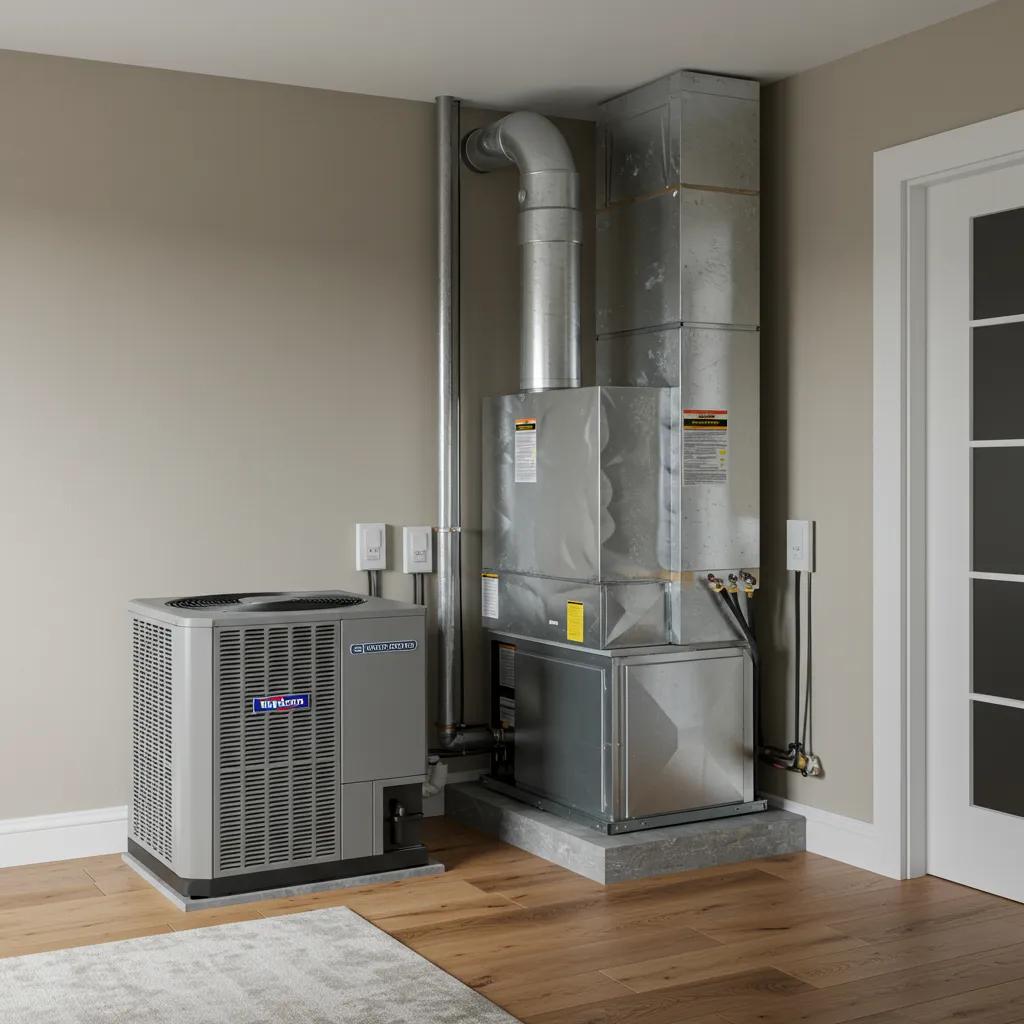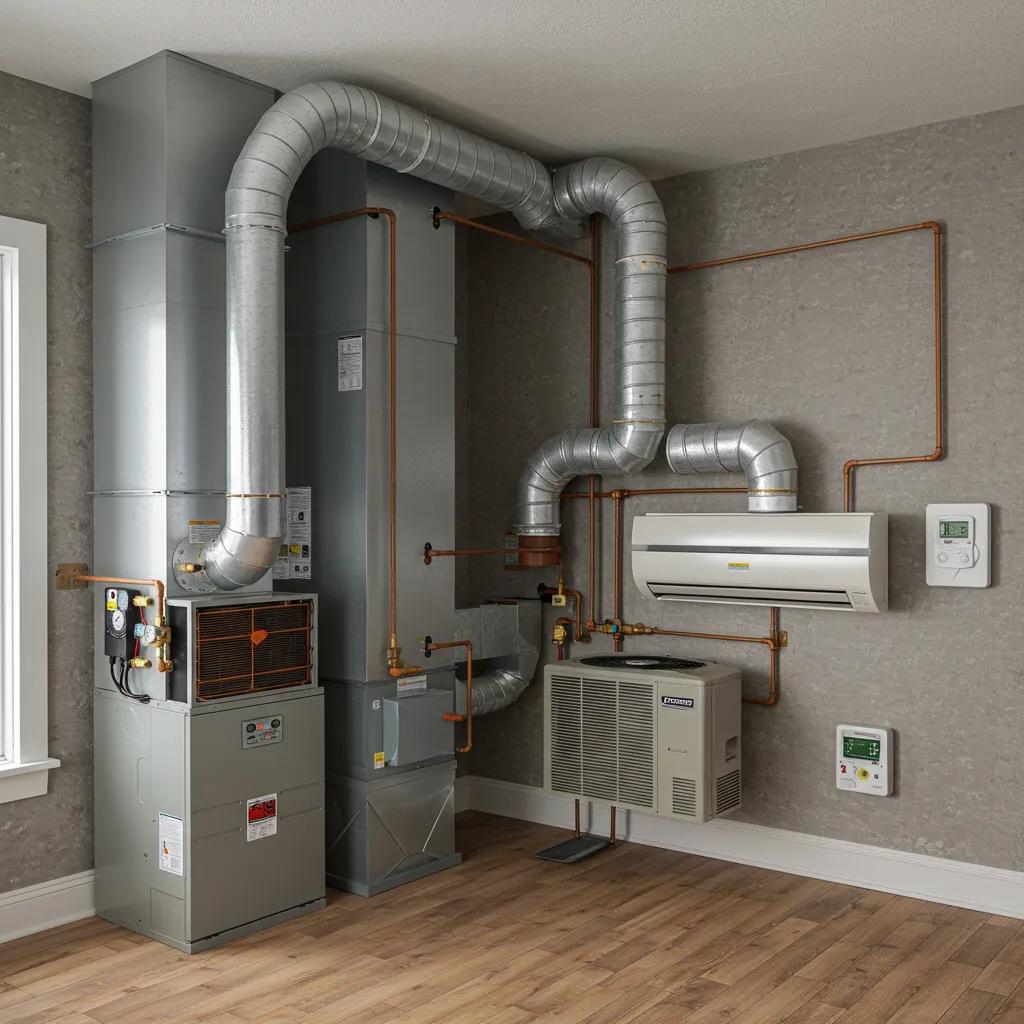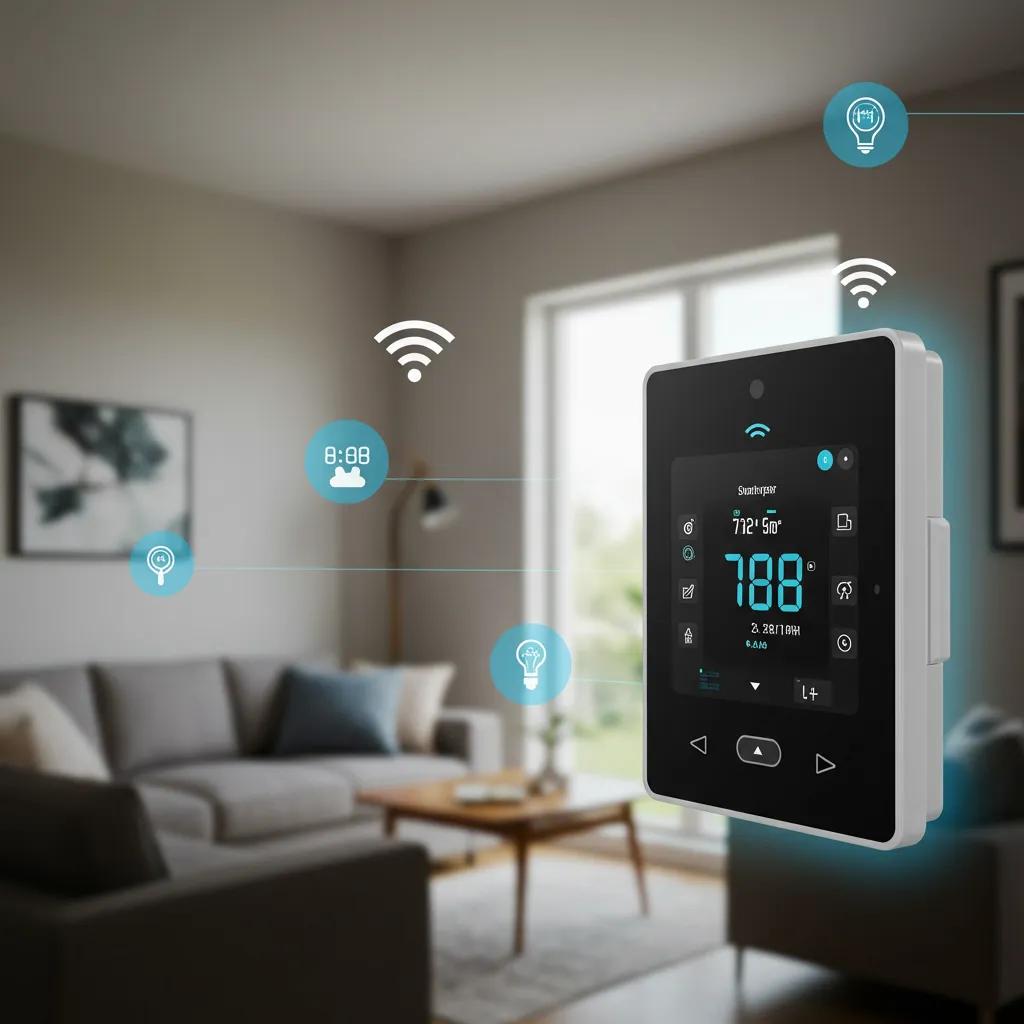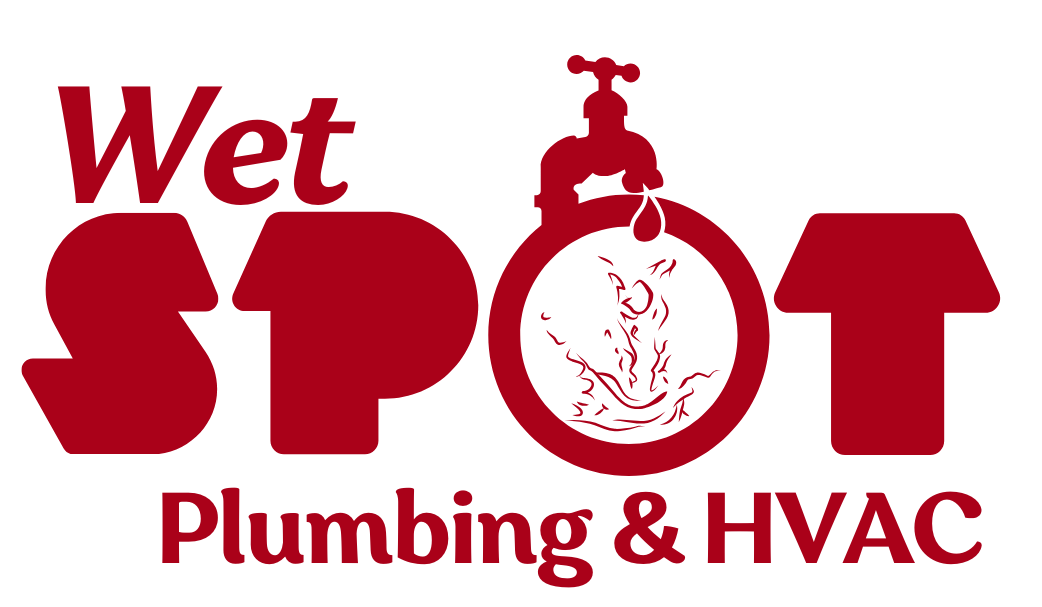
Complete HVAC Systems: Your Ultimate Guide to Types, Components, Efficiency, Smart Technology, and Installation Costs
Installing a complete HVAC system can cut your energy bills by up to 30% while maintaining optimal indoor comfort year-round. In this guide, you’ll discover what constitutes a truly integrated heating, ventilation, and air conditioning solution; explore the core components that drive performance; compare residential and commercial configurations; and learn how energy-efficient and smart technologies transform comfort and control. We’ll also break down installation steps, costs, maintenance factors, and indoor air quality strategies to help you make an informed decision about your complete HVAC needs.
What Is a Complete HVAC System and Why Is It Essential?
A complete HVAC system is an integrated network of heating, ventilation, and air conditioning components that regulate temperature, humidity, and air purity throughout a building, ensuring year-round comfort and health. By combining a heating source, cooling unit, ductwork or air handlers, and air quality controls, a complete HVAC system delivers consistent climate management, reduces energy waste, and supports occupant well-being—preventing hot or cold spots and minimizing airborne contaminants.
What Are the Core Components of a Complete HVAC System?

An effective HVAC installation relies on several interdependent parts working together to condition and circulate air. These core components include:
- Furnace or Heat Pump: Generates heat through combustion or heat exchange processes.
- Air Conditioner or Condenser: Removes heat and humidity from indoor air via a refrigerant cycle.
- Ductwork or Air Handler: Distributes conditioned air through supply and return channels.
- Thermostat or Control Panel: Regulates system operation and setpoints based on indoor conditions.
- Air Filters and Coils: Trap particulates and support heat transfer efficiency.
These elements form the backbone of a complete HVAC system and set the stage for advanced performance features like zoning and humidity control.
How Do Heating, Ventilation, and Air Conditioning Work Together?
Heating raises indoor air temperature through burners or compressors, ventilation exchanges stale indoor air with fresh outdoor air, and air conditioning extracts heat and moisture via refrigerant circuits. In a unified HVAC system, sensors and controls coordinate these functions: the thermostat signals the furnace or heat pump to start, air handlers distribute warmed or cooled air through ducts, and ventilation fans maintain air exchange rates. This seamless integration ensures thermal comfort, proper airflow, and healthy indoor air quality.
What Makes an HVAC System Truly Complete?
A truly complete HVAC system extends beyond basic heating and cooling to include indoor air quality (IAQ) components, humidity management, and intelligent controls. Air purifiers, humidifiers, and dehumidifiers remove pollutants and regulate moisture levels, while smart thermostats and zoning dampers optimize performance by adapting to occupancy patterns. Together, these enhancements support energy efficiency, allergen reduction, and personalized comfort throughout the entire home or facility.
What Are the Main Types of Complete HVAC Systems?
Complete HVAC solutions vary by application, equipment arrangement, and energy source. The major system categories include split systems, packaged units, ductless mini-splits, hybrid heat pump systems, and geothermal installations. Each type balances cost, efficiency, and installation complexity to meet specific residential or commercial needs.
What Are Residential HVAC System Types and Their Features?
Residential HVAC options deliver heating and cooling to single-family homes or apartments with differing configurations:
- Split Systems: Feature separate indoor and outdoor units connected by refrigerant lines and ductwork for whole-home distribution.
- Packaged Units: House all components in one outdoor cabinet, ideal for homes lacking attic or basement space.
- Ductless Mini-Splits: Provide localized comfort without ducts, offering zone control and high efficiency.
- Hybrid Systems: Combine heat pumps and gas furnaces to switch between electricity and fuel based on cost and outdoor temperature.
- Geothermal Heat Pumps: Use ground loops to harness stable underground temperatures for ultra-efficient heating and cooling.
These residential types vary in upfront cost, installation footprint, and efficiency ratings, allowing homeowners to choose the best fit for their budget and layout.
How Do Commercial HVAC Systems Differ?
Commercial HVAC systems are designed for larger spaces, higher loads, and continuous operation. Common commercial types include:
- Chillers and Cooling Towers: Provide centralized chilled water for air handlers in large buildings.
- VRF/VRV Systems: Offer modular zoning flexibility by linking multiple indoor units to a single outdoor condensing unit.
- Rooftop Units (RTUs): Consolidate heating and cooling in a weather-resistant package atop commercial roofs.
- Direct Expansion (DX) Systems: Use refrigerant-based coils in AHUs for efficient cooling in mid-size facilities.
Commercial solutions emphasize scalability, redundancy, and ease of maintenance to support high occupancy and diverse climate control requirements.
How to Choose the Right HVAC System for Your Building and Climate?
Selecting the optimal HVAC configuration depends on building size, insulation quality, local weather extremes, and budget constraints. Key factors include:
- Building Load and Square Footage: Calculate heat gain/loss to size equipment accurately.
- Efficiency Goals: Higher SEER, AFUE, and HSPF ratings deliver lower operating costs.
- Installation Complexity: Duct retrofit costs or ground loop excavation for geothermal may influence decisions.
- Climate Considerations: Cold-climate heat pumps and hybrid setups optimize performance in varying conditions.
Evaluating these criteria ensures the chosen system meets comfort expectations, energy targets, and return-on-investment goals.
What Are the Benefits of Hybrid and Geothermal Systems?
How Do Energy-Efficient HVAC Systems Save You Money and Reduce Environmental Impact?
Energy-efficient HVAC systems leverage advanced compressors, heat exchangers, and controls to minimize electricity and fuel consumption. By optimizing heat transfer and reducing runtime, these systems lower utility bills, shrink carbon footprints, and maintain comfortable indoor conditions without wasteful operation.
What Are the Top Energy-Efficient HVAC Technologies?
The most impactful efficiency upgrades include:
- Air-Source Heat Pumps: Transfer heat rather than generate it, achieving up to 300% efficiency.
Air Source Heat Pump Efficiency: A Comprehensive Guide
Air-source heat pumps are highly efficient systems that transfer heat from the outside air into a building. They typically achieve Coefficients of Performance (COPs) of 2 to 4, which translates to an efficiency of 200% to 400%, meaning they produce two to four units of heat for every unit of electricity consumed.
This information verifies the article’s statement regarding the high efficiency of air-source heat pumps, often reaching up to 300% or more.
- Geothermal Heat Pumps: Exploit stable subterranean temperatures for 400–600% efficiency.
- High-Efficiency Furnaces and ACs: Feature variable-speed compressors and modulating burners for precise output.
- Energy Recovery Ventilators (ERVs): Exchange heat and moisture between incoming and outgoing air streams.
Clean Energy 101: Geothermal Heat Pumps
Geothermal heat pumps are recognized for their ultra-high energy efficiency by harnessing stable underground temperatures. Specifically, networked geothermal systems have demonstrated efficiencies exceeding 500%, leading to significant reductions in energy costs and carbon emissions.
This citation supports the article’s claim about the exceptional efficiency of geothermal heat pumps, highlighting their ability to achieve 400–600% efficiency, especially in larger or networked installations.
How Are HVAC Energy Ratings Like SEER, AFUE, and HSPF Explained?
Understanding efficiency metrics helps compare products:
- SEER (Seasonal Energy Efficiency Ratio): Measures cooling output per unit of electric input over a season.
- AFUE (Annual Fuel Utilization Efficiency): Calculates yearly heat output versus fuel consumption for furnaces.
- HSPF (Heating Seasonal Performance Factor): Assesses heat pump efficiency for heating mode.
Higher SEER, AFUE, and HSPF values indicate more efficient operation, resulting in lower monthly energy expenses and reduced greenhouse gas emissions.
What Government Incentives and Rebates Are Available for Green HVAC Systems?
To offset upfront costs, many jurisdictions offer:
- Federal Tax Credits: Up to $2,000 for qualifying heat pump or furnace upgrades.
- State/Utility Rebates: Cash incentives for ENERGY STAR-rated systems and air sealing projects.
- Performance-Based Grants: Funding tied to measured reductions in energy consumption.
These programs lower financial barriers to adopting energy-efficient HVAC solutions and accelerate payback periods.
What Are Smart HVAC Systems and How Do They Improve Comfort and Control?

Smart HVAC systems integrate IoT sensors, AI algorithms, and networked thermostats to learn occupant patterns, adjust setpoints dynamically, and detect maintenance needs. This proactive approach enhances comfort, reduces energy waste, and extends equipment lifespan through predictive diagnostics.
What Is a Smart HVAC System and Which Technologies Does It Use?
Smart HVAC leverages:
- IoT Sensors: Monitor temperature, humidity, and occupancy in real time.
- AI-Driven Algorithms: Analyze data to optimize run cycles and detect anomalies.
- Smart Thermostats: Enable remote scheduling, geofencing, and adaptive learning.
How Do Smart Thermostats and IoT Devices Enhance HVAC Efficiency?
Smart thermostats improve efficiency by:
- Learning daily occupancy schedules and preconditioning spaces only when needed.
- Adjusting temperature setpoints during peak-rate periods or when windows are open.
- Providing real-time energy usage feedback to guide user behavior.
Data Shows Just How Much Smart Thermostats Can Save on Heating, Cooling Costs
Independent studies have indicated that smart thermostats, such as the Nest Learning Thermostat, can lead to notable energy savings. Users have been found to save an average of 12% on heating costs and 15% on cooling costs through features like smart scheduling and adaptive learning.
This research directly supports the article’s claim that smart thermostats can boost energy savings by 10–15% through optimized operation.
How Can Smart HVAC Systems Integrate with Home Automation Platforms?
Leading smart HVAC products seamlessly connect to Google Home, Amazon Alexa, or Apple HomeKit for voice control and unified automation routines. For example, enabling a “Good Night” scene can:
- Lower the heat pump setpoint.
- Turn off exhaust fans.
- Activate bedroom humidifier.
This interoperability ensures HVAC adjustments become an integral part of broader smart-home comfort and security scenarios.
What Future Trends Are Shaping Smart HVAC Technology?
Emerging innovations include:
- AI-Based Predictive Maintenance: Forecasts component wear and schedules service before failure.
- Renewable Energy Integration: Coordinates HVAC operation with on-site solar generation.
- Advanced Zoning with Motorized Dampers: Creates micro-climates within open-plan spaces.
- Edge Computing in Controllers: Processes sensor data locally to minimize latency and cloud dependence.
These advancements promise ever-greater responsiveness, efficiency, and resilience for complete HVAC solutions.
What Does a Complete HVAC Installation Involve and What Are the Associated Costs?
Installing a complete HVAC system requires careful planning, equipment selection, professional labor, and post-installation verification to ensure optimal performance and safety. Installation costs vary widely based on system type, complexity of ductwork, and regional labor rates.
What Is the Step-by-Step Process for Installing a Complete HVAC System?
- Conducting a Manual J load calculation to size equipment correctly.
- Designing or inspecting ductwork layout for proper airflow balance.
- Installing outdoor units (condensers or geothermal loops) and indoor components.
- Connecting refrigerant lines, electrical wiring, and controls.
- Testing refrigeration pressures, airflow, and thermostat calibration.
- Demonstrating system operation and maintenance procedures to the owner.
Following these steps ensures compliance with performance standards and manufacturer warranties.
How Much Does Installing a Complete HVAC System Typically Cost?
What Are the Long-Term Operating and Maintenance Costs of HVAC Systems?
Over a 10-year lifecycle, operating and upkeep expenses include:
- Energy Consumption: 65–75% of total lifecycle cost, influenced by run hours and efficiency ratings.
- Routine Maintenance: $150–$300 annually for filter replacement, cleaning, and inspections.
- Component Replacements: $500–$2,000 for compressors or heat exchangers near end of equipment lifespan.
Proactive maintenance and high-efficiency equipment reduce both utility bills and repair frequency over time.
What Are Common HVAC Problems and How Can They Be Troubleshooted?
Typical issues often involve:
- Inadequate Airflow: Clean or replace clogged filters and verify blower motor operation.
- Uneven Heating/Cooling: Balance ducts and inspect dampers for proper adjustment.
- Refrigerant Leaks: Repair coil or line leaks and recharge refrigerant per manufacturer guidelines.
- Thermostat Malfunctions: Calibrate or replace mismatched controls to restore accurate setpoint regulation.
Timely diagnosis and preventive service help sustain system reliability and efficiency.
How Does Indoor Air Quality (IAQ) Fit into a Complete HVAC System?
Indoor air quality is an integral component of a comprehensive HVAC solution, as clean and properly conditioned air supports respiratory health, productivity, and overall comfort. By incorporating filtration, ventilation, and humidity control into HVAC design, buildings maintain pollutant-free environments and balanced moisture levels.
What HVAC Components Improve Indoor Air Quality?
Key IAQ elements include:
- High-Efficiency Particulate Air (HEPA) Filters: Capture particles down to 0.3 microns.
- UV-C Light Modules: Inactivate microorganisms on coils and drain pans.
- Humidifiers and Dehumidifiers: Maintain indoor relative humidity between 40–60%.
- Energy Recovery Ventilators (ERVs): Exchange stale indoor air with fresh outdoor air while recovering heat and moisture.
What Are the Health Benefits of Enhanced Indoor Air Quality?
Improved IAQ yields measurable benefits:
- Allergy Symptom Reduction: Lower pollen and dust concentrations ease respiratory reactions.
- Fewer Respiratory Infections: UV-C and ventilation limit mold and bacterial growth.
- Enhanced Cognitive Performance: Cleaner air increases alertness and decision-making capabilities.
Healthy indoor environments translate into well-being, productivity, and fewer sick-day absences.
How Can Ventilation Systems Be Optimized for Better Air Exchange?
Mechanical ventilation design should consider:
- Air Change Rate (ACH): Target 0.35–0.5 ACH for residential spaces or higher for commercial areas.
- Balanced Supply and Exhaust: Prevent pressurization or depressurization that draws in unconditioned air.
- Demand-Controlled Ventilation: Use CO₂ sensors to adjust fresh air intake based on occupancy levels.
Properly engineered ventilation supports continuous pollutant removal without excessive energy losses.
How Can You Compare Different Complete HVAC Systems for Your Needs?
Comparing HVAC options involves evaluating performance attributes, installation impacts, and long-term value. Side-by-side assessments help identify the best match for comfort goals, budget, and sustainability priorities.
What Are the Pros and Cons of Split Systems vs. Packaged Units?
Below is a comparative analysis highlighting key differences:
How Do Ductless Mini-Splits Compare to Traditional Ducted Systems?
Ductless mini-splits enhance flexibility by:
- Providing individual zone control without duct installation.
- Eliminating energy losses associated with leaky ductwork.
- Enabling targeted comfort in additions or retrofit spaces.
However, visible wall-mounted heads may not suit every interior design preference, and per-zone costs can exceed centralized ducted solutions in larger homes.
What Are the Benefits of Geothermal Heat Pumps Compared to Air-Source Heat Pumps?
Geothermal systems outperform air-source units by:
- Operating efficiently in extreme temperatures thanks to stable ground temperatures.
- Sustaining COPs (Coefficients of Performance) of 4.0–5.0 versus 2.5–3.5 for air-source models.
- Reducing defrost cycles and noise levels due to buried loops.
While geothermal installations require higher upfront investment, their exceptional efficiency delivers deeper energy savings over the system’s lifespan.
How Do Smart Controls Affect the Overall Performance of HVAC Systems?
Smart controls elevate HVAC performance by enabling:
- Demand-based zoning that reduces idle runtime.
- Predictive maintenance alerts that prevent unexpected failures.
- Remote diagnostics that streamline service visits.
Integrating intelligent management systems ensures your complete HVAC installation adapts dynamically to usage patterns, weather fluctuations, and efficiency targets.
Building on these comparisons, your next step is evaluating local installers and financing options to turn your complete HVAC vision into reality.
Experience consistent comfort, healthy air, and energy savings today by exploring certified HVAC professionals and tailored system designs.
